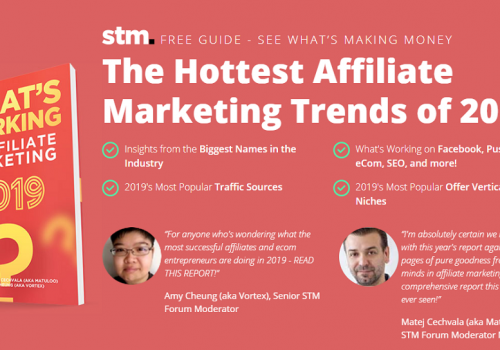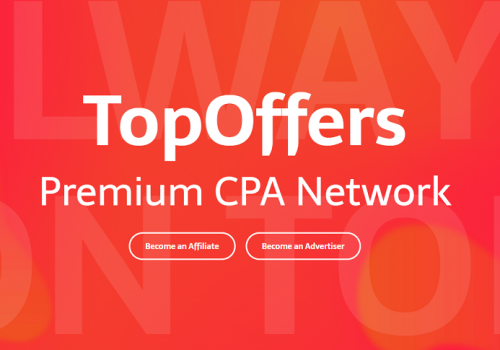Affiliate Marketing (AM) is a business, and as with any other business, you need to invest some money at the beginning. People keep on asking how much money is actually needed to start in AM and whether it’s even possible with a small budget. So let me take a closer look at this topic, to help you understand what it takes to become an affiliate marketer in terms of funding.
First of all, we need to set one thing straight – in order to sell anything at all, you need the visitors (traffic) and there are two possible approaches to obtain it – PAID and FREE (organic). The simple logic behind these two approaches determines how much $ you will actually need to start. If you decide to work with PAID traffic, your costs will be higher of course.
This is very obvious and easy to understand. But to really decide what approach would be better for you, we need to dive into this a little bit deeper. Both approaches have their pros and cons, so let me try to compare them.
Let’s start with the PROS of each approach :

PROS OF PAID TRAFFIC :
– You can start getting visitors pretty much immediately, all it takes is to make an account at some traffic source, fund your account, make a campaign and launch it. You might have to wait some time to get your campaigns approved, but that’s usually just a couple of hours.
– You decide how much traffic you will buy. In case you have the budget for this, only sky is the limit. This is the biggest advantage of the “paid” approach – once you have a campaign that works, you can open the flood gates and start making 1000s of $$$ per day. Optimizing campaigns isn’t easy, but it really can work like this. Super affiliates who run a ton of volume per day, are usually working with paid traffic.
– You decide what traffic you will buy and who you buy it from. Let’s say you have a great product, but it only accepts visitors from Austria, they have to be browsing on a Samsung SmartPhone and they need to be connected via the Orange mobile carrier? This is not a problem with paid traffic, you can choose exactly what kind of traffic you want to buy.
– You don’t need any site in order to buy traffic. It’s not as easy as it was in the past, but you can still make money by sending visitors directly to the product pages, without maintaining any site of your own.
PROS OF FREE (ORGANIC) TRAFFIC :
– Well, it’s free 🙂 This is the biggest advantage of this approach. You will still need to make some minor investment and spend a lot of your time on it, but the traffic itself is free. Produce content that people would like and the visitors will come to you, eventually.
– Free organic traffic tends to be more stable, it won’t die from one day to the next. Unless you get banned by google for example, so focus on whitehat methods of traffic building.
– Organic traffic is usually of high quality, find something that your visitors are interested in and they will convert. You can also sell this traffic to some traffic networks or individual buyers.
– Since you need a website in order to get organic traffic, you are actually building an asset that can turn into a passive income source. Once a site is ranked, all it takes is to update it from time to time and it can keep on making money for years. My longest running site was started in 2003 and it is still making money, 13 years straight! Building sites based on organic traffic can also be part of your exit strategy, you would have something to sell.
Obviously, there are also CONS, and again for both approaches.

Let me start with PAID traffic again :
– Higher budget is required. Since you need to buy all the traffic, you need the budget for it. The absolute minimum I would recommend would be $1000. If you don’t have this kind of money, paid traffic is not for you, not yet. You need to build the budget elsewhere first, maybe even with organic traffic. Traffic is not the only expense : you will also need a server, domain(s), tracking solution, spytool … I will sum it up a bit later on.
– You will be loosing money at first, this is absolutely inevitable. Every single person who ever started with paid traffic, was loosing money at first. If you think you will be different, you are wrong. PERIOD! This is something you need to accept, otherwise don’t even start with paid traffic.
– You will have to deal with some level of fraud – traffic networks sell bots, affiliate networks scrub leads … these are annoyances you have to get used to. We all have to deal with that, nobody is immune to this, so it’s not something only you’d have to struggle with. Just wanted to note that.
– You can lose a lot of money! Think twice before making any decision, watch your campaigns closely, use every means possible to limit your loses.
– There are no guarantees that you will actually make it. Not everyone has the right mindset or skills to make it with paid traffic. Don’t think that just because you invest $1000, you are guaranteed to start making profits. Many people fail at this. But then again, it’s the same with any type of business.
– Running paid traffic is awesome when all clicks just fine, but it can be super stressful when it’s not. When testing new products, sources … you’re not just “not making money” you are actually loosing it. This is again something you have to get used to.
FREE TRAFFIC has CONS too :
– You need to run content sites in order to build organic traffic at all. Whether you choose to focus on SEO (search engine optimization), Viral sites or Social media, you will always have to build content to attract the visitors.
– You need to invest a lot of time into your sites, someone needs to write/produce the content. You can also hire someone to do it for you, but this will obviously drive your costs up a lot. You also need to update your sites in order to preserve your search engine rankings for a longer period of time.
– It takes much longer to build organic traffic compared to using paid ads. In many cases, you need to produce content for months without getting much visitors. It’s easy to give up and stop producing content when there is no-one looking at it.
– When building SEO traffic, you are basically Googles bitch. What google gives, google can take. Since they own such a large % of the market, if they ban you, your site is pretty much done.
– Organic traffic is a mix of GEOs (countries), traffic types (mobile, tablet, desktop) etc … this makes it a bit harder to monetize every last hit. You can’t really make special ADs for every language that your visitors speak and visits from some countries will be just wasting your Bandwidth bill, because they come from countries that nobody want’s to advertise/sell in.
I could go on with the PROS and CONS, but I would say the most important have been covered and I’m sure you already understand the main differences. If I should sum it up in one sentence, it would be something like this : Working with PAID traffic requires way bigger budget and you can burn a lot of $ with it, but the possible profits are higher too and you can start pretty much imediately. Organic traffic can yield more stable profits, but usually in the lower range and prepare to build content for months before seeing any returns.
SO HOW MUCH MONEY DO YOU ACTUALLY NEED TO START WITH EITHER OF THEM?

Let me try to sum up the inevitable costs associated with starting in AM, both with paid and organic (free) traffic.
PAID traffic first :
– You need some hosting to put landing pages (LPs) on, you can try without LPs too, but you will start using landing pages eventually anyways. When starting out, you can pick a cheap VPS or Cloud solution from companies like beyondhosting.com, vultr.com or digitalocean.com … expect to spend anywhere between $20 – $50 per month, based on what plan you choose.
There is a ton of hosts so pick whatever you want, but keep one thing in mind – with paid traffic, speed is an important factor, you need every single click that you bought, to hit your landing pages. DO NOT go for shared hosting like bluehost.com, hostgator.com etc … these are cheap, but they are not suitable for paid traffic campaigns.
In case you will be using static (html only) LPs, you can also use a CDN, rackspace.com cloud files for example. These are billed per GB transferred. LPs are usually very “light” pages, so it will be almost free. I’m paying less than $5 per month and I’m serving 100s of thousands hits per day. It will depend on the KB size of your LPs obviously.
– You also need TRACKING, this is a must. With paid traffic, it’s crucial to know exactly what type of traffic converted, in order to buy more of that. And this is what trackers do, they will show you exactly what visitor made a conversion – what site/placement they come from, what country, what device …

There are quite a few trackers out there, but some of them are considered the top ones. We had a poll on STM Forum not so long ago and these 5 came out as winners : Voluum, Thrive Tracker, FunnelFlux, Adsbridge and CPV Lab.
Each of them is billed on a per month basis, except for CPV Lab which is a one time charge. Some are self hosted, which means you have to use your own server or CPV for this : CPV Lab and Funnel Flux. The rest of them is hosted and Thrive offers both a hosted and a self-hosted version.
Voluum starts at $99 per month for 1.000.000 events. 10.000.000 events plan is $399.
Thrive starts at $99 per month for the self hosted version and $299 for the hosted one.
FunnelFlux is a flat $99 per month, per license. The offer only a self hosted version for now, so you need your own server too.
CPV Lab is a one time fee of $297 which includes 1 year of support and updates. Additional support is optional and costs $147 per year. This needs a server again too as it’s a self hosted tracker.
Adsbridge offers a free basic plan, for up to 50.000 visits per month. This is a very low limit so it’s only good for the first few days, the next plan comes at $25 for 100.000 visits. 1.000.000 visits plan is $75 per month.
Each of the trackers has some pros and cons, so it’s hard to recommend one, but let me try it anyways. FunnelFlux get’s my vote in case you want a self hosted tracker, it has a lot of nice options. Voluum is probably the best hosted tracker, but it get’s expensive with high volume. That’s where Thrive takes over as their high volume plans are more affordable. Adsbridge is a pretty popular choice amongst newbies, because of the free basic plan, but with higher volume, the prices grow up to similar level as with competition.
– Next thing you MUST have is a VPN (Virtual Private Network) software. The most notoriously known is HideMyAss.Com. What this soft does is hiding your real location and replacing your IP address with one of their private ones. This way, you can surf the net as if you were connected from any country in the world.
This is very useful when you want to check what your competition is promoting in any given GEO of the world. Since pretty much all traffic networks use GEO targeting, you only see ADs targeted at your own country, unless you fake it with a VPN.
– In case you can afford it, I would recommend to get a spytool too. I personally use the Adplexity family of tools, they have separate tools for mobile, native, adult and desktop. Having a spytool is NOT a total must, but it definitely helps a TON.
These tools “surf” the internet and collect Intel about all kinds of competitors campaigns, so you can easily analyze them in one place. This way, you know exactly what is promoted where … all the way from banner, through the LP to the actual product.
SUMMARY FOR PAID TRAFFIC:

The absolute minimum is VPS ($20-$50 per month) or a CDN ($5 per month), tracker ($25 – $99 per month), VPN ($5-$15 per month) plus at least $20-$30 per day for traffic. If you can afford it, add $150 per month for a spytool. This means, based on the tracker and hosting you choose, you need at least $635 for the first month. If you pick a VPS, the cost goes up to $655-$670. Picking a more expensive tracker will kick the costs up by another $75, so that would mean roughly $750. Add a spy tool and you are at $900.
To stand a fair chance at succeeding, you need funds to cover at least 3 months. Even thou you will be loosing at first, part of the money will return in terms of revenue generated (not profit), so you don’t need a multiple of 3 to cover the first 3 months. But it would definitely be a good idea to prepare at least $1500 – $2000, in case you are serious about paid traffic AM.
NOW LET’S TAKE A LOOK AT STARTING WITH ORGANIC TRAFFIC
As I already mentioned, not everyone has the budget to work with paid traffic straight away. Many affiliates actually start with organic traffic and once they build up their budget, they move to paid traffic. This is a very good strategy too. On top of that, it’s awesome to have a side income in place, when moving into paid traffic – it helps to manage the stress.
– The most important factor here is TIME. Start now. It will take months to get some ranks in google and the other SEs (search engines), to get noticed on social media, to build content that can attract visitors. Do not wait and start NOW. Don’t worry if you don’t have a perfect plan, you can polish things as you go. You can iron out the small glitches later on, but you definitely can’t turn back time.
– You will have to build a site, or a network of sites. Check my older post about building a network of niche mini sites to get some inspiration. You need some CMS (content management system) in order to run a site. You have two options here again, either pick an expensive one (or custom coded) or choose a free one.
I strongly recommend to start with the free solutions, the most popular are WordPress and Joomla. I like WordPress more, but some people prefer the other one, so the choice is yours. These CMS systems are so popular, that you can do almost anything with them, even e-shops for example. Fans of the platform produced a ton of so called “plugins” that you can install and build advanced sites with.
These systems both use a TEMPLATE system, templates are unique designs/layouts that you can download either for free or buy them. The prices for pretty advanced templates start at around $20, there is a ton of really good ones at $40-$50. Check out TemplateMonster.Com for example, there is a fuckload of them to choose form.
– Domain or domains – Pick something related to the subject of your site(s), but don’t spend a month looking for the perfect domain name. The importance of a domain name is nowhere as big as it used to be. On top of that, wtf is a “google”? They made it up and now everyone knows what it represents, you can try the same. You can pickup domains for a few cents with the help of Godaddy.Com coupons for example.
– You need to host the site(s) somewhere. The requirements on hosting speed are not so strict as with paid traffic, so even a shared plan could do the job. There are even some free hosts available, but I’m not a fan of anything that is free – you get what you pay for. Get a cheap VPS or a cloud solution, digitalocean.com or vultr.com should do the job just fine. But really, any hosting with decent reviews will be good enough to host a smaller site.
Start with a cheap plan, and in case you manage to grow, you can always upgrade. The good thing is, unless you plan to build free adult sites, you don’t need 10.000s of visits to make decent revenue. Try to pick a subject that you are good at and build content based on your knowledge. Take this blog as an example, I’m good at what I do for a living, so I write about it. For those who would like to know what it takes to build a site like this, I created a section where I will be posting the month-to-month progress, check it out here.
– You should also build an email list/newsletter, there are many solutions for this. You can use free plugins for this again, but people usually reach better results with paid tools. There is a lot of them : Aweber, Getresponse, Mailchimp … these start at $15 -$20 per month and increase as your list grows.
There is a ton of other things that you could invest in – like content producers, coders, courses to teach you how to do this and that … but the truth is, in order to START, you just need a domain, CMS system and a server + a ton of your time.
SUMMARY FOR FREE (ORGANIC) TRAFFIC

Let’s sum up the costs needed to start “publishing” – Domain ($1-$10 per year), Hosting ($5-$20 per month), CMS (free), Template ($0-$50), Email Collection ($0-$15 per month). We are looking at an initial cost of less than $10 if we manage to find a cheap domain and use free plug-ins wherever possible.
In case we decide to buy a better hosting, advanced template and a paid email list solution, the cost will go up to about $90 for the initial setup (plus 1st month costs) and then $35 per month. I’m not sure I know about any other business where you could start THIS CHEAP!
FINAL RECOMMENDATION :

I’d like to keep your attention for a few more seconds and tell you one more thing : In case you are looking to earn 1000’s of $$$ per day, building sites for organic traffic is probably not your final destination. Of course, there are sites that make that kind of money and we all know the stories about websites or online services that sold for millions. But the probability of this happening to you is VERY small.
Sure, it can happen, but it will take years of hard work and a unique idea. The more common way is to start with organic traffic, build up the budget and then move to paid traffic to escalate the revenue.
Making large sums of money is easier with paid traffic. It’s not simple by any means, but if you manage to crack the code, it’s only a matter of a few months to start making 100’s of $$$ in daily profits. I know plenty of people who make $10.000 – $15.000 profit per month with paid traffic and those are not the big dogs. Super affiliates make $1000s in profit per day and there are some sitting on the top who reach $10.000s or even 6 figures in profits in a single day.
I am a big fan of a hybrid approach so to speak. Having a few passive income organic traffic sites is what keeps my mind in peace, when my paid campaigns suck and lose money. Once the paid campaigns take over, the importance of these sites decreases it is just an extra income that is nice to have. But since every paid campaign dies at some point, the cycle starts over and over.
Build sites for stability and hopefully, to have something to sell when the need arises. Take part of the money and invest it into paid traffic and see if you can make it there. Take the best from both worlds. You can also check this older article of mine to read more about the organic VS paid approach.
Thanks for reading. Comments welcome! 🙂
[grwebform url=”https://app.getresponse.com/view_webform_v2.js?u=Sym6E&webforms_id=8162402″ css=”on” center=”off” center_margin=”200″/]







9 comments
Really cool article! Thanks for your work!
nicely summed up numbers.
thank you for the article, ton of useful information!
One question regarding domain, do you use just one general domain and subdomains for each LP? Does the name of the domain even matter?
Who asks, shall be delivered :
http://www.matuloo.com/how-important-are-domain-names-in-affiliate-marketing/
🙂
great 🙂 thanks a lot
1- Life is a fight and every cent ought to be earned.
2- Throughout the text loose was used in place of lose. It ought to be fixed.
But overall I agree with the strategy, you build websites and then take the income from there to move into paid traffic. Unless you work on Wall Street and earn a bazooka amount.
The “loose” mistake corrected, thanks for pointing that out! It’s one of those grammar mistakes I keep on doing for years 🙂
Thanks for the article 🙂
How much budget do you recommend only for traffic?
The more the better 🙂 On a more serious note, I wouldn’t even consider starting with less than $1000 available for traffic, that’s the bare minimum I would say.